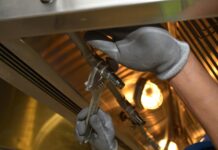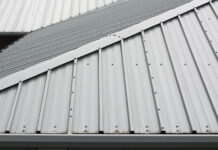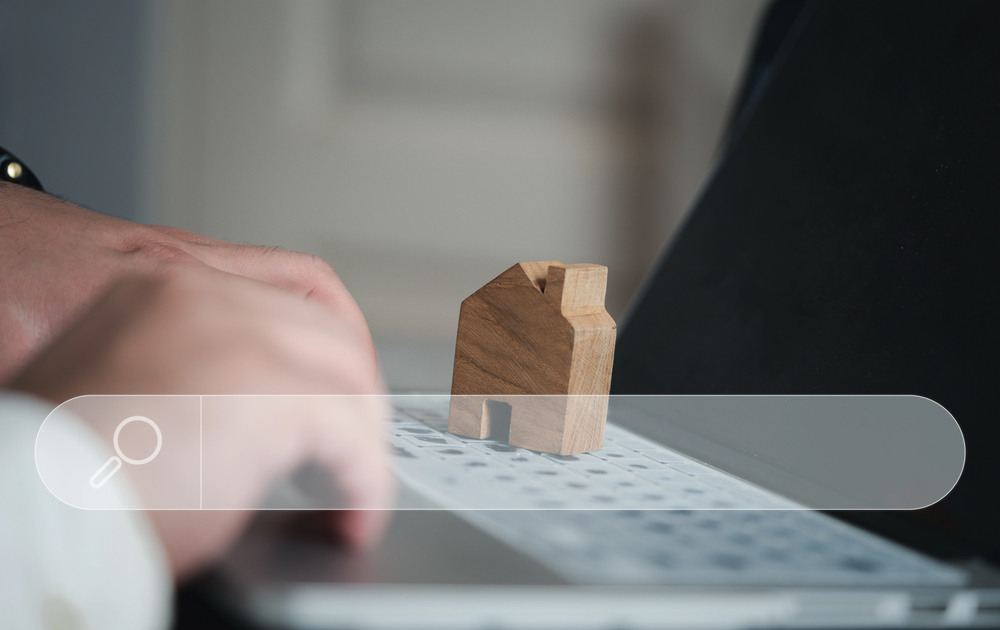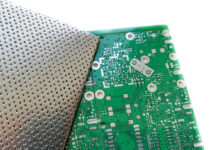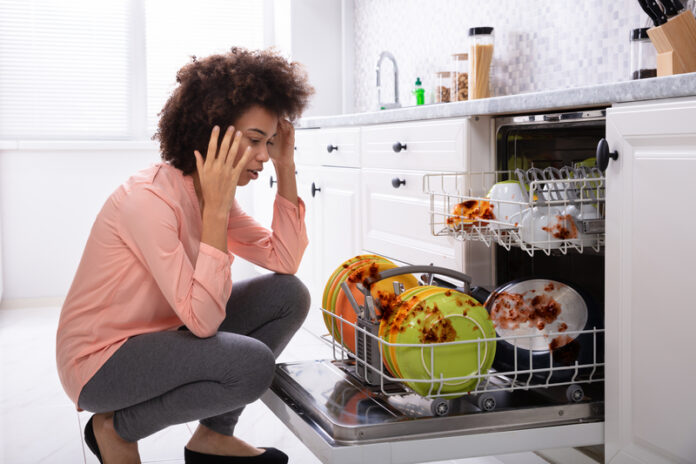
Is your dishwasher suddenly displaying one of the dishwasher error codes possible, leaving you perplexed about what went wrong?
These mysterious codes can often be intimidating, but understanding their meaning is the first step before addressing the issue.
Understanding Dishwasher Error Codes
Dishwasher error codes serve as a diagnostic and troubleshooting tool.
They are designed to alert you to whatever problem your machine is facing, offering hints about the malfunction.
By interpreting these signals correctly, you can often save time and money on repairs.
However, keep in mind that not all dishwashers will display all error codes; it varies depending on the model and manufacturer.
Common Dishwasher Error Codes and Their Meanings
E1 – Water Supply Error
This code typically indicates an issue with the water supply.
It might result from a kinked water hose, a closed water tap, or a clog within the valve.
Ensuring the hose is straight and free from obstructions can often clear this error.
E2 – Draining Error
If your dishwasher isn’t draining properly, this code might appear.
The culprit could be a blocked filter, a kinked drain hose, or a clogged pump impeller.
Regularly cleaning the filter and ensuring the hose and pump are unobstructed can prevent such issues.
E3 – Heating Error
A heating element issue is flagged by the E3 code.
This might be due to a malfunctioning heater, a faulty thermostat, or an issue with the circuit board.
Professional dishwasher repair service might be required to fix the heating components.
E4 – Overflow/Error Leak
When the dishwasher detects an overflow or leak, an E4 error surfaces.
This could happen from excess sudsing, a broken pump, or a malfunctioning sensor.
Check for water accumulation at the base and address any drain or pump issues.
E5 – Door Not Closed
If the dishwasher’s door isn’t properly latched or closed, it will trigger an E5 error.
It’s important to ensure there’s no obstruction keeping the door open.
The latch might also need adjustment.
F8 E1/HE – Faulty Temperature Sensor
When you see this code, it suggests issues with the temperature sensor.
If your dishwasher is running unusually cold or hot cycles, the sensor might require replacement.
This task is typically best left to professionals for dishwasher repair.
DIY Solutions for Dishwasher Error Codes
Assessing Water Supply Issues
When facing water supply problems, always start by ensuring the tap is fully open.
Inspect your water inlet hose for any bends or blockages.
In some cases, sediment might accumulate in the valve screens, requiring cleaning.
Draining Problems and Solutions
First, inspect the filter and remove any visible debris if your dishwasher isn’t draining.
Ensure the drain hose is free from kinks or clogs.
Afterward, test the pump for any obstructions or damage.
Dealing with Heating Errors
For heating issues, check if the heating element shows physical damage.
If the element appears intact, the problem might be with the circuit or thermostat.
Consult a professional to avoid the risk of electric shock or further complications.
Handling Overflows and Leaks
In the event of an overflow, start by checking for blockages in your dishwasher’s base or filter.
Ensure that you’re using the correct detergent to prevent excess sudsing.
If this doesn’t resolve the issue, inspect the door seal for leaks.
Door Latch Repairs
For door-related issues, examine the latch mechanism for defects.
Sometimes dirt or debris might prevent complete closure.
A gentle realignment or cleaning with a damp cloth can remedy minor problems.
Temperature Sensor Replacements
Temperature sensor malfunctions often need part replacements.
If you notice significant cycle temperature discrepancies, a professional assessment is advised.
DIY fixes in this department are usually not recommended due to the technical nature.
The Importance of Regular Maintenance
Ensuring your dishwasher operates smoothly involves regular maintenance.
Routine checks of hoses, filters, and gaskets can prevent many common errors before they occur.
Implement a monthly cleaning schedule for the filter and hose to deter build-up and obstructions.
Moreover, ensure your detergent is suitable and dosed correctly to minimize sudsing-related errors.
When to Call a Professional
While DIY fixes can resolve a variety of dishwasher error codes, there are scenarios where professional intervention is necessary.
If your dishwasher shows persistent issues or fails to respond after DIY attempts, a specialist’s help is prudent.
Complex repairs involving circuitry, heating elements, or part replacements ideally require professional handling to maintain safety and appliance longevity.
Conclusion
Error codes in dishwashers are not just displays of malfunction; they are guides leading to faster solutions.
Understanding these codes is crucial in maintaining the appliance’s health with minimal professional intervention.
By practicing regular maintenance and addressing warning signals quickly, you extend your dishwasher’s lifespan and efficiency.
However, when advanced issues surface, relying on experienced technicians ensures precision and safety in repairs.
Regular preventive measures and swift responses to error codes can prevent long-term damage and costly replacements, preserving convenience in your kitchen for years to come.
Find a Home-Based Business to Start-Up >>> Hundreds of Business Listings.

